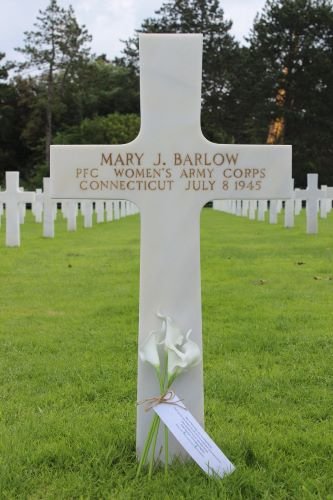
In March 1941, Army Chief of Staff Gen. George Marshall wrote, “We must plan for every possible contingency, and certainly must provide some outlet for the patriotic desires of our women.” 

Marshall thought women serving was not only nice, but necessary: "first, there are a great many jobs connected with the Army’s war program which women can handle better than men; 

second, it was evident then, as it clearly is today, that the demands on manpower would be so great that a large number of women should be incorporated in the Army’s effort.” 

Women were eager to serve. According to Creation of the Women’s Army Corps, more than 35,000 women applied for the anticipated immediate 1,000 positions. 

After the first WAAC class graduated in late summer 1942, Marshall wrote to WAAC director Oveta Culp Hobby:
“Their record of the first few weeks gives me great confidence in the future of the corps and the tremendous assistance they will be to the armed forces.
“Their record of the first few weeks gives me great confidence in the future of the corps and the tremendous assistance they will be to the armed forces.

We need their enthusiasm, their talents and high purpose. This is only the beginning of a magnificent war service by the women of America.” 

It was not intended that the new Auxiliary Corps members serve overseas, as they were not given the same securities as soldiers: they didn’t have military life insurance or veterans’ health benefits. 

Gen. Dwight Eisenhower, impressed with the efficient British servicewomen in North Africa, asked for five auxiliary corps officers, some of whom spoke French, to serve as executive secretaries just a few days into the North Africa campaign in the fall of 1942. 

The ship the WAACs traveled on was torpedoed, and while they arrived in Africa safely, they arrived without uniforms or military gear.
This episode led to the creation of the Women's Army Corps which became an official part of the U.S. Army.
This episode led to the creation of the Women's Army Corps which became an official part of the U.S. Army.

Some were thrilled women were serving; some weren’t. In the spring/summer 1943, there was an unfortunate effort to undermine the accomplishments of the Corps. This “slander campaign” was “an onslaught of gossip, jokes, slander, and obscenity about the WAAC.” 

Disturbed by this turn of events, Marshall wrote to Hobby: “I learned of the attack which had been directed against the integrity of the Women’s Army Auxiliary Corps. 

The Secretary of War has already stated in forcible terms the views of the War Department in the matter, but I wish to assure you personally of my complete confidence in the quality and value of the organization which has been built up during the past year under your leadership.” 

Marshall made sure that there was no mistaking his support of the WAC when he issued the following directive: The Women’s Army Corps is now an integral part of the Army and a highly essential part of our war effort. 

Its units have met their responsibilities with efficiency & are rendering an invaluable service. Reports indicate that there are local commanders who have failed to provide the necessary leadership ... in some instances made evident their disapproval of the Women’s Army Corps. 

All commanders in the military establishment are charged with the duty of seeing that the dignity and importance of the work which women are performing are recognized and that the policy of the War Department is supported by strong affirmative action.” 

Jobs were expanded in the new Army Corps including car mechanic, photographer, printer, aircraft plotter, armorer, laboratory technician, finance officer, mail & package sorter, gunnery instructor, electrician, and driver. 







By the end of the war, WAC personnel served stateside and overseas in North Africa, the Mediterranean, throughout Europe, the Southwest Pacific, China, Burma India, and the Middle East. 

Approximately 550 were killed in the line of duty; three members of the 6888th are among the four women buried in the Normandy American Cemetery. 





The Women’s Army Corps expanded both in number and in jobs over the 36 years of its existence. In 1978, the U.S. Army abolished the Women’s Army Corps, and women were fully integrated into the Army.
#MarshallFoundationLibrary
#MarshallFoundationLibrary

• • •
Missing some Tweet in this thread? You can try to
force a refresh







